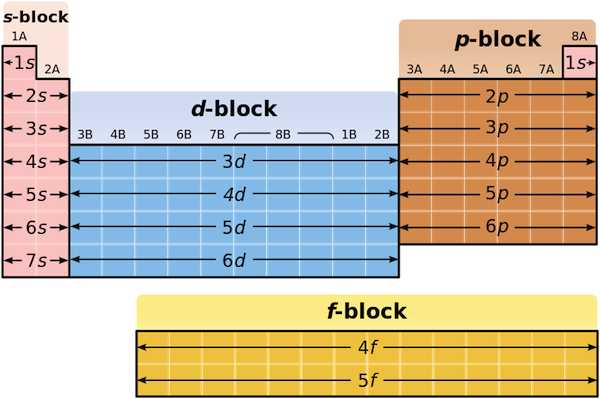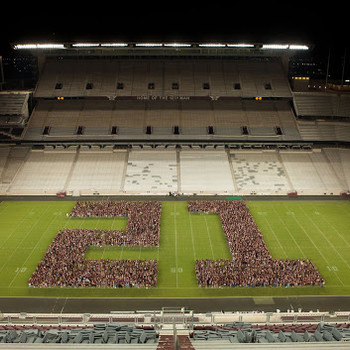How do you write electron configurations?
1 Answer
You can start with the Periodic Table; that is the easiest way to determine electron configuration. Also, sorry for the long, but hopefully helpful, post.
Explanation:

- Groups
#1# and#2# are known as the#s# block, because those elements have outermost electrons in an#s# orbital - The
#p# -block elements have their outermost electrons in the#p# orbital(s) but also have#s# orbital electrons. - The
#d# -block elements fill#d# orbitals with electrons before filling#p# orbitals (if at all). - The
#f# -block elements also fill#f# orbitals before filling#p# orbitals and before#d# orbitals.
Each orbital can hold a maximum of
The number of electrons in each orbital is denoted in the superscript in the electron configuration.
The first quantum number is the principal quantum number
The second quantum number, the angular momentum
#l = 0# corresponds to an s orbital#l = 1# corresponds to a p orbital#l = 2# corresponds to a d orbital#l = 3# corresponds to an f orbital#l = 4# corresponds to an g orbital#...#
The third number, the magnetic quantum number
s orbital
- Because there is only 1 possible
#m_l# value, there is only 1 s orbital per energy level, which also correspond to the period number
p orbital
- Because there are 3 possible
#m_l# values, there are 3 p orbitals per energy level (starting from period 2), which also correspond to the period number
d orbital
- Because there are 5 possible
#m_l# values, there are 5 d orbitals per energy level (starting from period 4), but the energy level for d orbitals is 1 less than the period number, which is why period 4 elements have 3d orbitals, period 5 have 4d orbitals, etc.
f orbital
- Because there are 7 possible
#m_l# values, there are 7 f orbitals per energy level (starting from period 6), but the energy level for f orbitals is 2 less than the period number, hence the 4f orbitals in period 6 and 5f orbitals in period 7
The final quantum number, magnetic spin
Every single electron in an element has a different set of 4 quantum numbers; no 2 electrons have the same combination of quantum numbers!
Moving on to electron configurations, when writing these, the s orbital always comes first for every new period. When d and f orbitals come in, those electrons should be written after the s and before p.
Examples
-
#H# (Hydrogen)
#1s^1#
Hydrogen only has 1 electron in the s orbital of the first energy level -
#He# (Helium)
#1s^2#
Helium has 2 electrons in the s orbital, which is now full, of the first energy level -
#N# (Nitrogen)
#1s^2 2s^2 2p^3# or#[He] 2s^2 2p^3#
Nitrogen has 2 electrons in the s orbital of the first energy level, 2 more electrons in another s orbital on the 2nd energy level, and 3 electrons in the p orbitals of the 2nd energy level. The second representation is a common equivalent shorthand using the electron configuration of the noble gas that comes before the element. -
#Br# (Bromine)
#1s^2 2s^2 2p^6 3s^2 3p^6 ul (4s^2 3d^10 4p^5)# or#[Ar] 4s^2 3d^10 4p^5#
Similar format as before, but notice how the 3d electrons are written before the 4p electrons. Also notice how much simpler and quicker it is to write the shorthand, especially in larger elements such as Bromine. -
#U# (Uranium)
#1s^2 2s^2 2p^6 3s^2 3p^6 4s^2 3d^10 4p^6 5s^2 4d^10 5p^6 6s^2 4f^14 5d^10 6p^6 5f^3 6d^1 7s^2 # or#[Rn] 5f^3 6d^1 7s^2#
As you can tell, the very large elements get very complex in their electron configurations, and the order of each subshell may not be correct (or may have many correct forms).
Notice in these examples that the superscripts for s orbitals only go up to 2, for p got up to 6, for d go up to 10, and for f go up to 14. This is due to the number of possible
Periodic trends are very useful when identifying and classifying elements.


